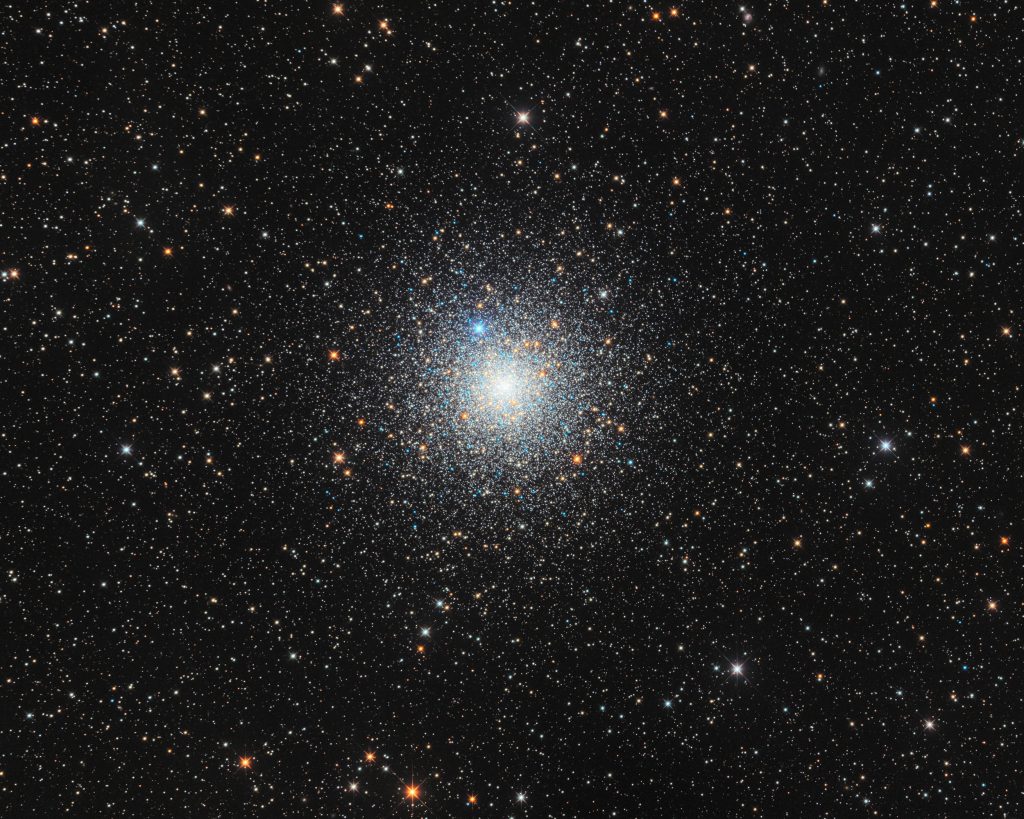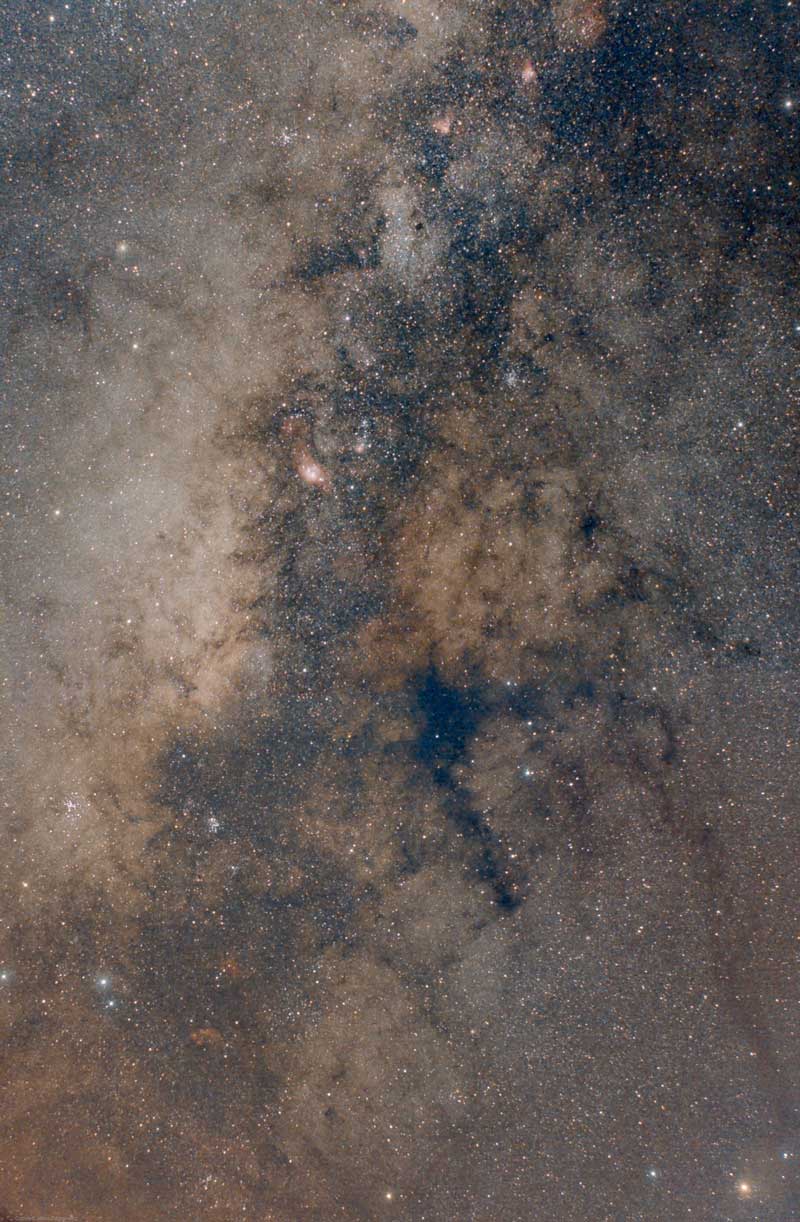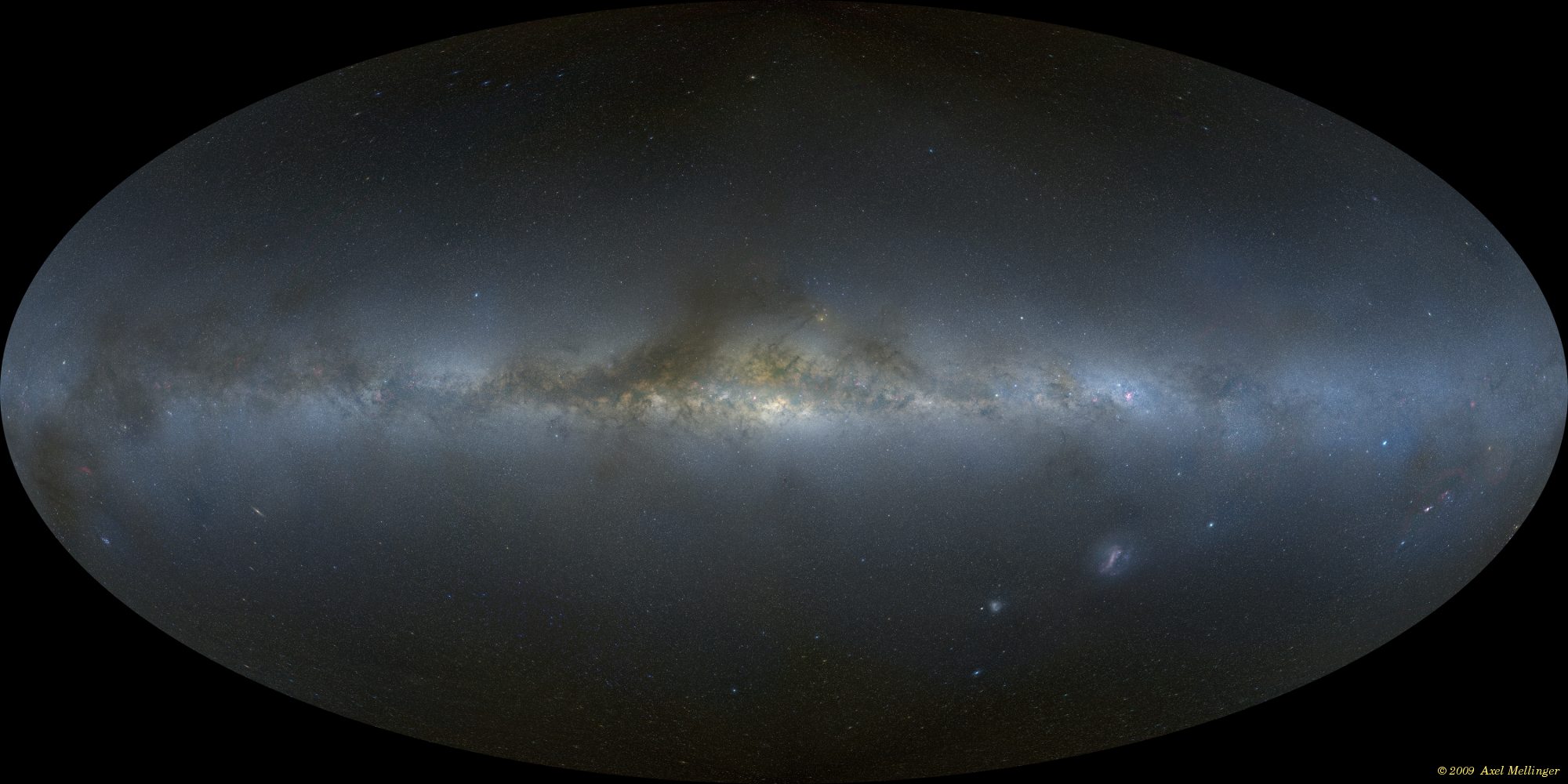Globular clusters are aggregations of stars in a spherical shape. They are bound by their mutual gravity and have high star density towards their centers. These ancient star clusters orbit the center of galaxies.
Globular clusters are considered to be old because they mostly contain low mass stars. It is important to understand that large stars have much shorter lives than low mass stars do. Smaller stars burn their fuel more slowly than larger stars. Also, large mass stars emit more blue light than do smaller stars resulting in them appearing blue.
Blue stragglers are young large mass stars in globular clusters. Their much younger age is incompatible with the age of the host globular cluster.
Astronomers believe that blue stragglers are the result of the merger of smaller stars in the cores of globular clusters. The relatively high concentration of stars in the cores of globular clusters facilitates these mergers.
The globar cluster NGC 6752 is located approximately 13,000 light-years away in the direction of the constellation Pavo. The cluster is over 10 billion years old and is a companion of our Milky Way. It contains more than one hundred thousand stars in a sphere 100 light-years across.

Image source: Globular Star Cluster NGC 6752



